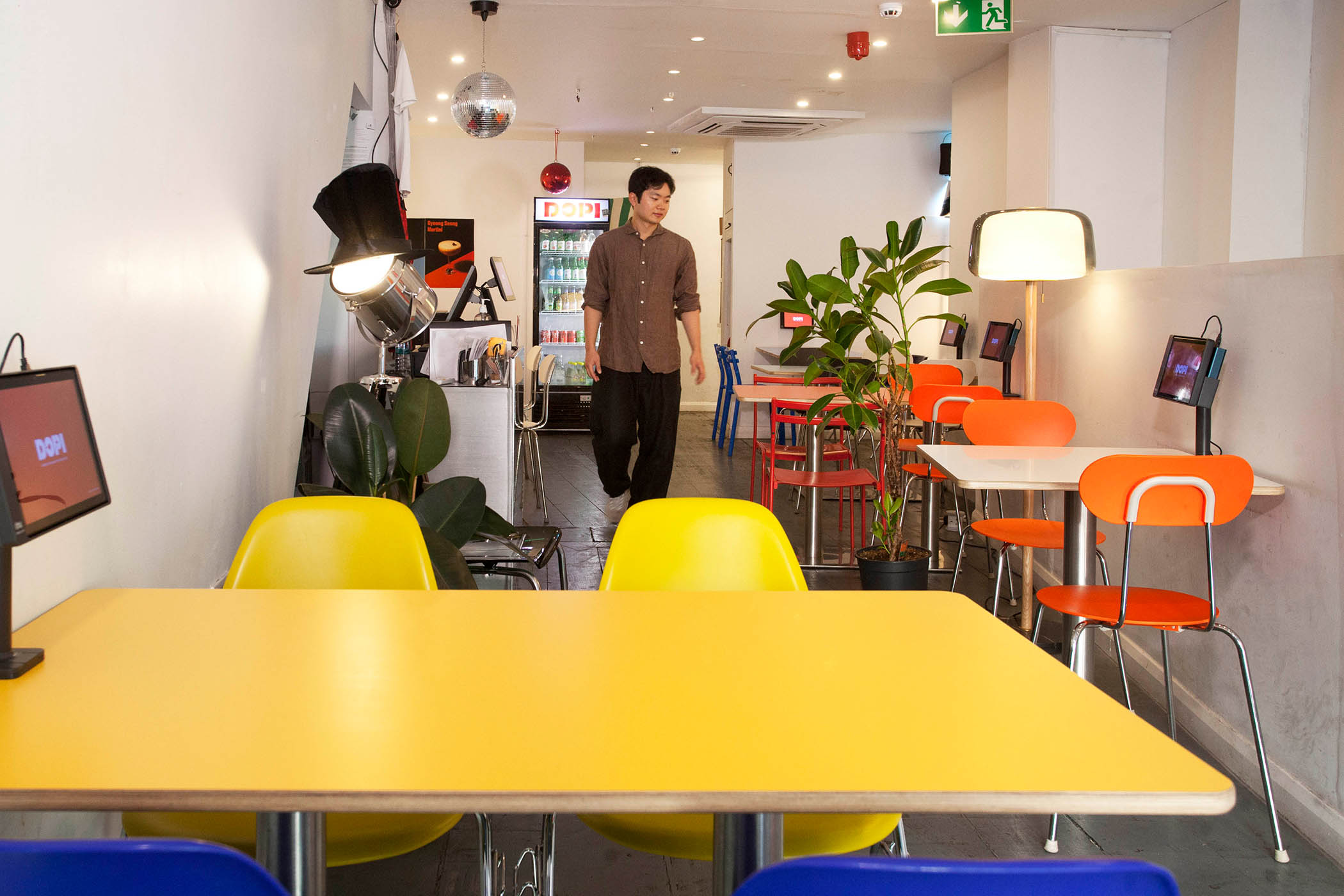Photographs by Sophia Evans
Until a few weeks ago, Dopi, a dimly lit South Korean restaurant on Bethnal Green Road, was next door to a shop selling K-pop ephemera: T-Shirts, signed pictures, figurines. When the shop first opened, queues of young Koreans and young people fascinated by Korean popular culture snaked from its door, blocking the pavement, irritating the weekend crowds who’d come to Shoreditch for street food and vintage shops. It’s gone now, its empty shell is messy with litter and broken-up. A few doors down is a PicPic, a Korean photo-booth shop in which teens pose in cutesy furry costumes, and across the street is a Korean barbecue joint. In this way, Shoreditch isn’t peculiar. In London’s West End there’s another cluster of Korean businesses, on Charing Cross Road, an even busier tourist stretch, selling Korean corn-dogs, Korean clothes, Korean makeup, Korean groceries, also beset with queues. I was in such a queue once, embarrassed, waiting to buy a snail-slime moisturiser for my beloved.
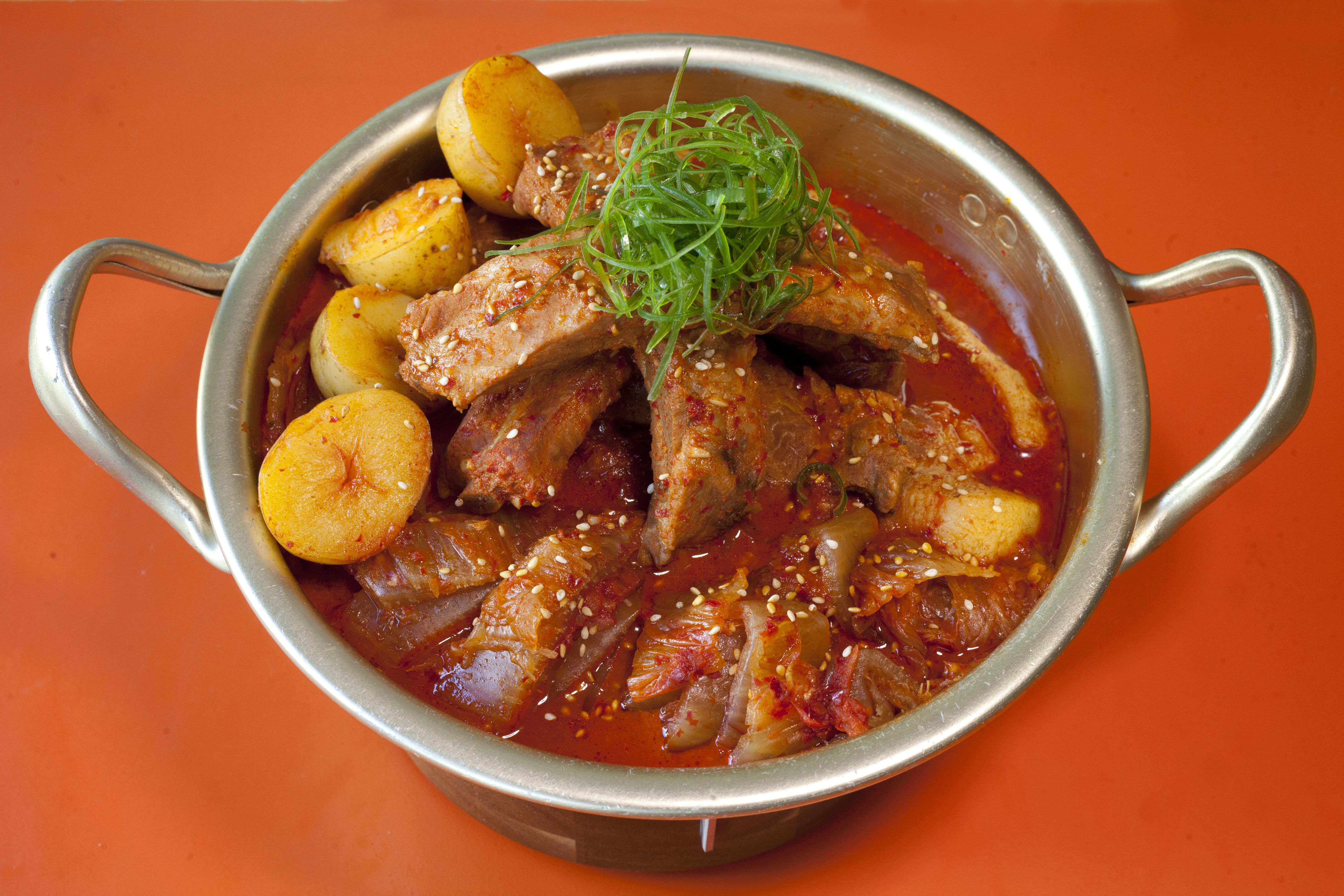
‘The food of some universal grandmother’: gamja-tang
There are no queues outside Dopi when I visit, only the ever-present gaggle of smokers, looking like the out-spill of an underground club. The gaggle was what first drew my attention to Dopi, which is across the street from my flat. Was it some sort of social club? A place for Korean émigrés to touch base? Could I go inside? Only after a couple of months were menus posted on the windows, in Korean and English, perhaps in recognition of my confusion.
Such insouciance reflects Dopi’s vibe, yes, but also the familiarity Londoners now have with Korean food. A decade ago, when so many barbecue places opened in the capital, there seemed greater emphasis on the futurist bent of Korean culture: beer towers with neon lights, flashing signs, holograms – cross-cultural tricks to coax in passersby. It made me think of early Italian restaurants, their chequered tablecloths and wicker chianti bottles à la Lady and the Tramp. A move to plainness is what comes of familiarity.
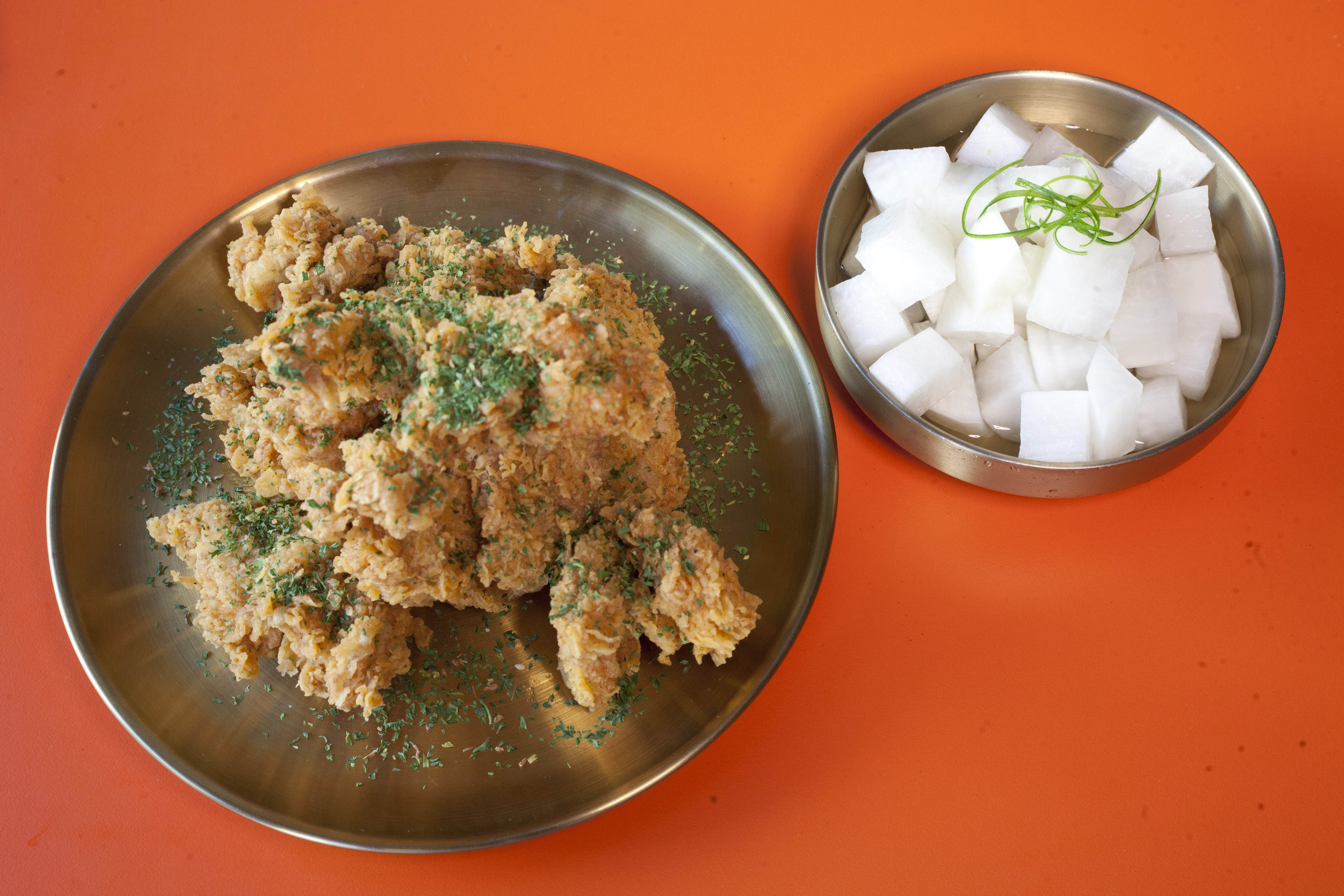
‘Marked by the rigidity of the batter, its crunch’: fried chicken
Inside Dopi I’m greeted warmly by a young smiling waiter who ushers me to my table, where sits my glamorous friend Song-I. The lights are reddish and a little dark, the tables and walls bare, the brightest lights emanating from iPads strapped to each table. Song-I is drinking Terra, a Korean beer, and apricot soju, pouring drams of the latter into the former, not so much fortifying as perfuming, mixing quickly with a spoon. “It’s called somaek when you mix both,” she says. I take a sip. Korean beer is light in flavour, as is soju, and the artificial apricot adds something candyish.
The food here is street food, anju, the stuff served in a pocha – a semi-permanent bar that sells simple, often fried, food to accompany drinking. Koreans love to drink and, like almost everyone else on the planet, are loath to drink without food. Korea hasn’t just exported makeup, music and food, but also film and TV, low and high culture, Squid Game and Parasite; pochas are seen in both, venues for drunken despair, filling the position of a hard-bitten PI’s dive bar, of Withnail and I’s horrible London pub.
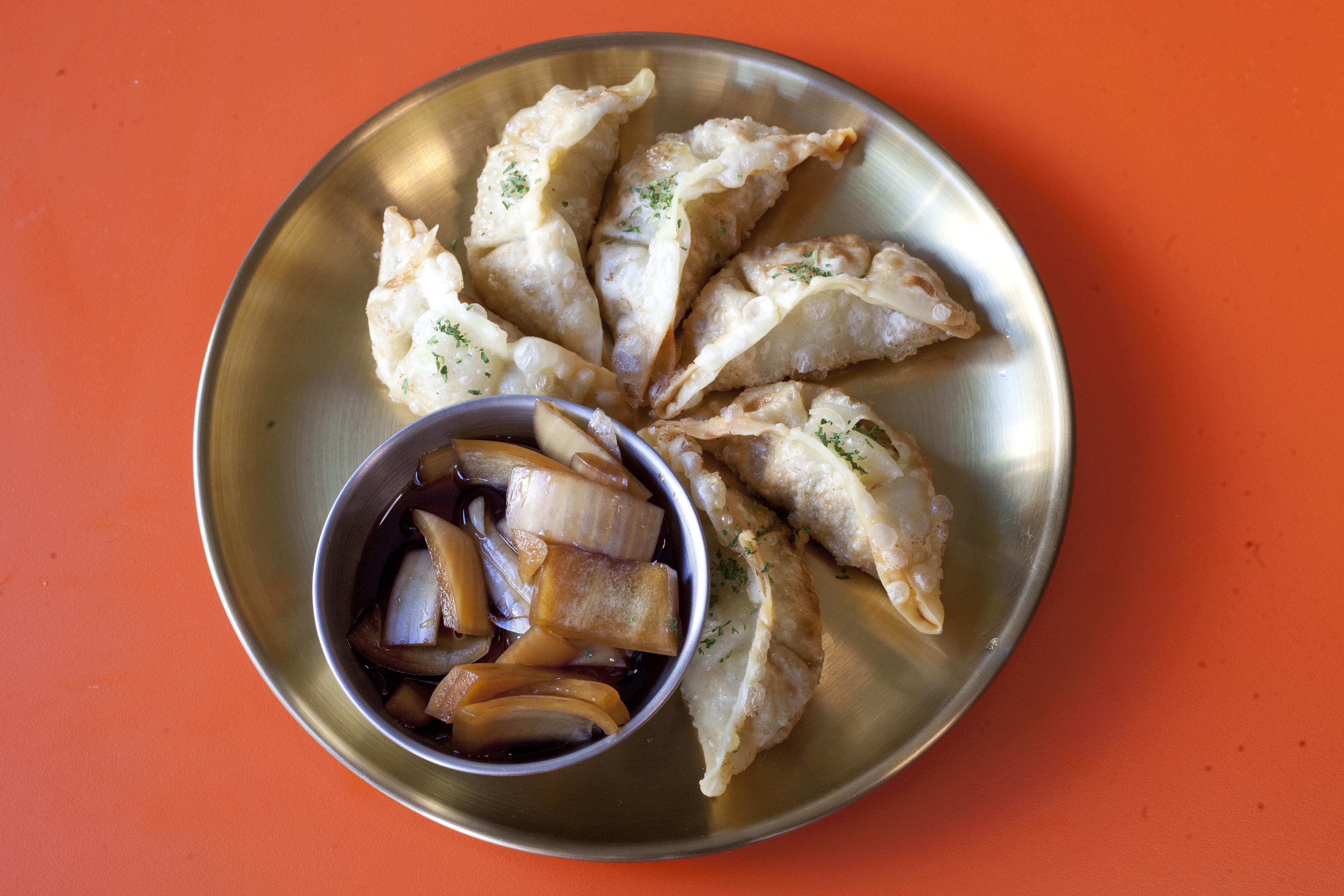
‘The sweet meat is underlined with mild spice and onion’: gunmandu
“Let’s get cheese corn!” says Song-I.
The first dishes to arrive are gunmandu, fried dumplings filled with pork, paired with slices of pickled onions. They’re crisp and the sweet meat is underlined with mild spice and onion, their rich oiliness cut by the pickle. Next, the cheese corn, a boat of sweetcorn in a white sauce, an Instagramable dish with an almost comical cheese-pull. It’s surprising, the sauce sweeter than I’d imagined, lighter too, the corn-like candy exploding in my mouth. I do not love it, I think, then take another spoonful and find that perhaps I do.
Then, a plate heaped with two kinds of fried chicken, one slick with chilli, the other plain and crisp. Everyone, everywhere likes fried chicken and the Korean sort is marked by the rigidity of the batter, its crunch. At Dopi it’s cut with cubes of pickled radish, which are white, clean as marble, integral to the next greedy bite.
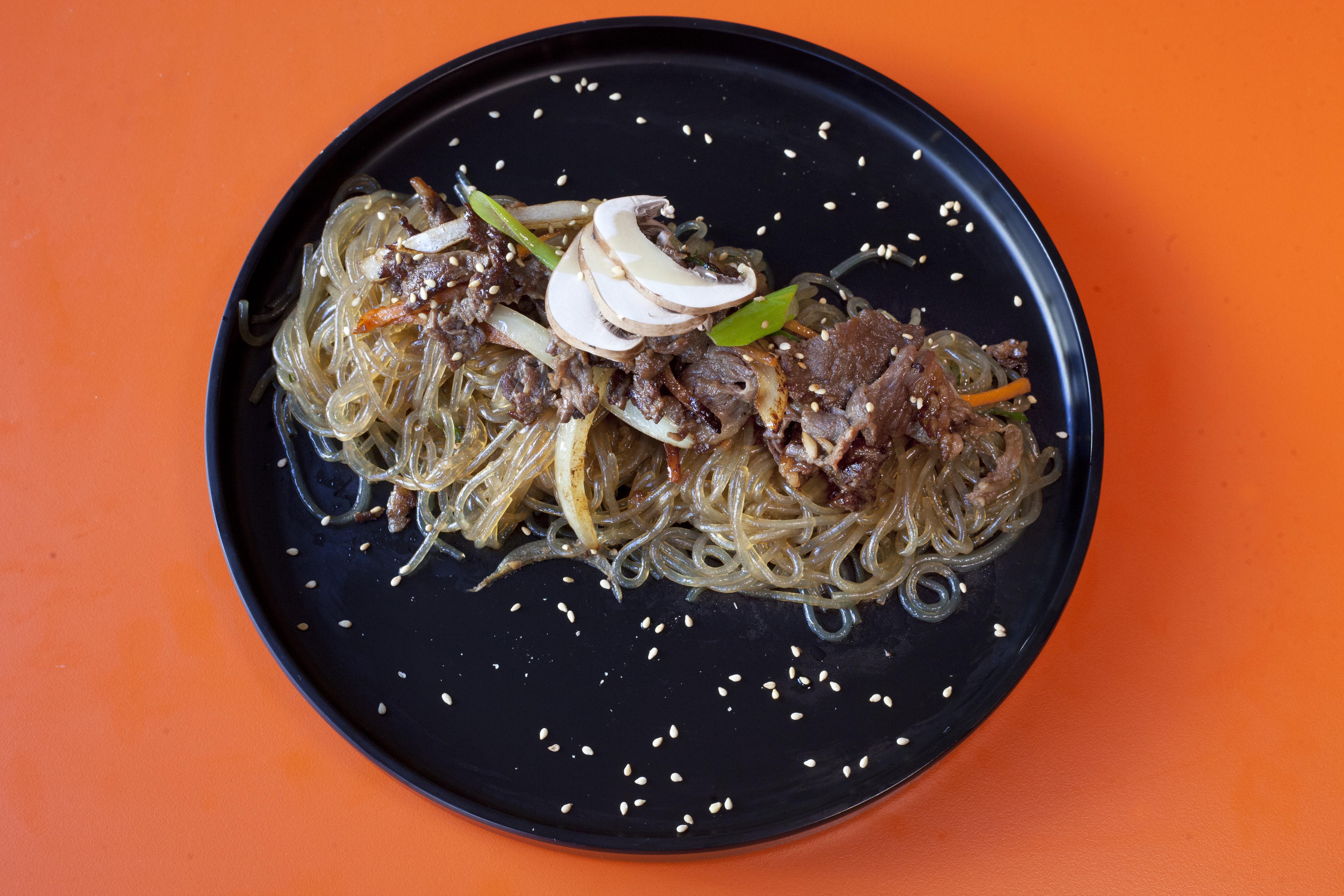
‘The elegant shine, elasticity and gelatinous mouthfeel of the noodles still surprise me’: japchae
And then japchae, a crystalline sweet-potato noodle, in a semi-sweet sauce with slivers of beef. Their elegant shine, elasticity and gelatinous mouthfeel still surprise me, are still alien. Some Korean food, which I didn’t grow up with, reveals entirely novel combinations, flavours, feelings. It’s the closest I get to knowing the excitement my mother must have felt trying an avocado for the first time at 20, sushi at 30.
Three discs of haemul-pajeon, seafood pancake, are placed to fill the remaining bit of table. They’re rich with oil, with sharp protrusions of sweet spring onion, green against yellow, and a moreish omelette-like batter, the unspecified seafood noticeable more from texture than taste. Song-I tells me that in Korea you judge a restaurant by the variety and quantity of the seafood in the pancake – how many octopus legs, how much squid. This hasn’t got lots, but you can’t have everything. And then bulgogi, beef in a sweet-salty sauce, sizzling on a cast-iron platter. We eat it in lettuce leaves and gochujang, making wraps called ssam, which combine lightness and richness, give and crunch.
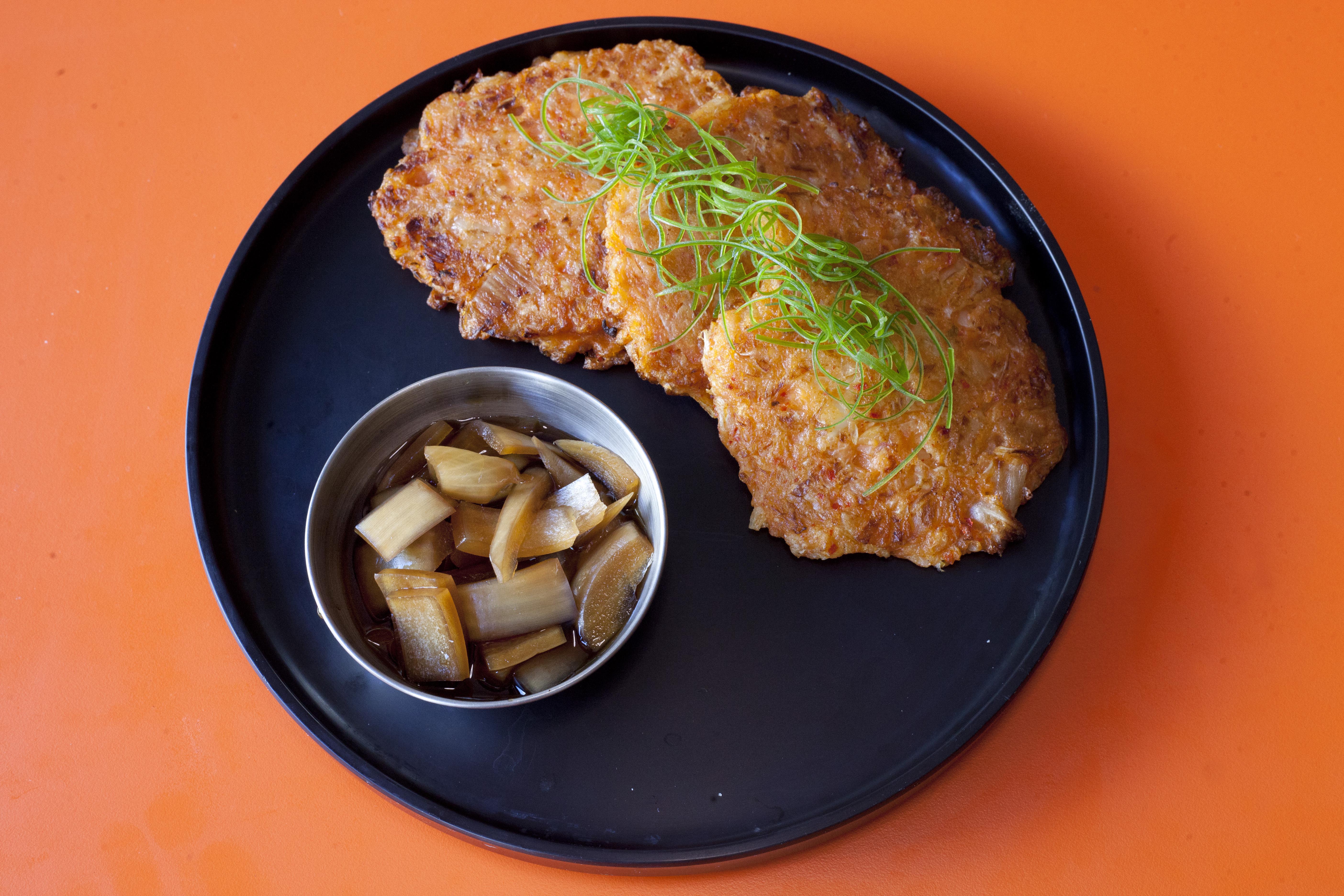
‘Fried in a moreish omelette-like batter’: haemul-pajeon
Our waiter neatly combines two plates so that she may bring excellent house-made kimchi, packed firm, marbled red and white like a side of wagyu; perfectly cooked rice in metal pots; and a gigantic bowl of gamja-tang, a stew of pork, kimchi and potatoes, which is hearty, the food of some universal grandmother. I hold my little metal bowl close to my face and lap up the sauce and rice, warm not spicy, rich not heavy. The pork is a little mealy, of poor quality, unrelated to the cheapness of the cut, belly, which ought to be butter-soft and fall off the bone.
In the fridge, a bottle of soju bears the Squid Game branding, beside another illustrated with a cat-girl, concessions to global K-culture. Our plates are cleared, but we aren’t rushed. We order ice-creams: matcha and black sesame. They come in generous scoops in glass cups, and are savoury, light and somehow abstemious.
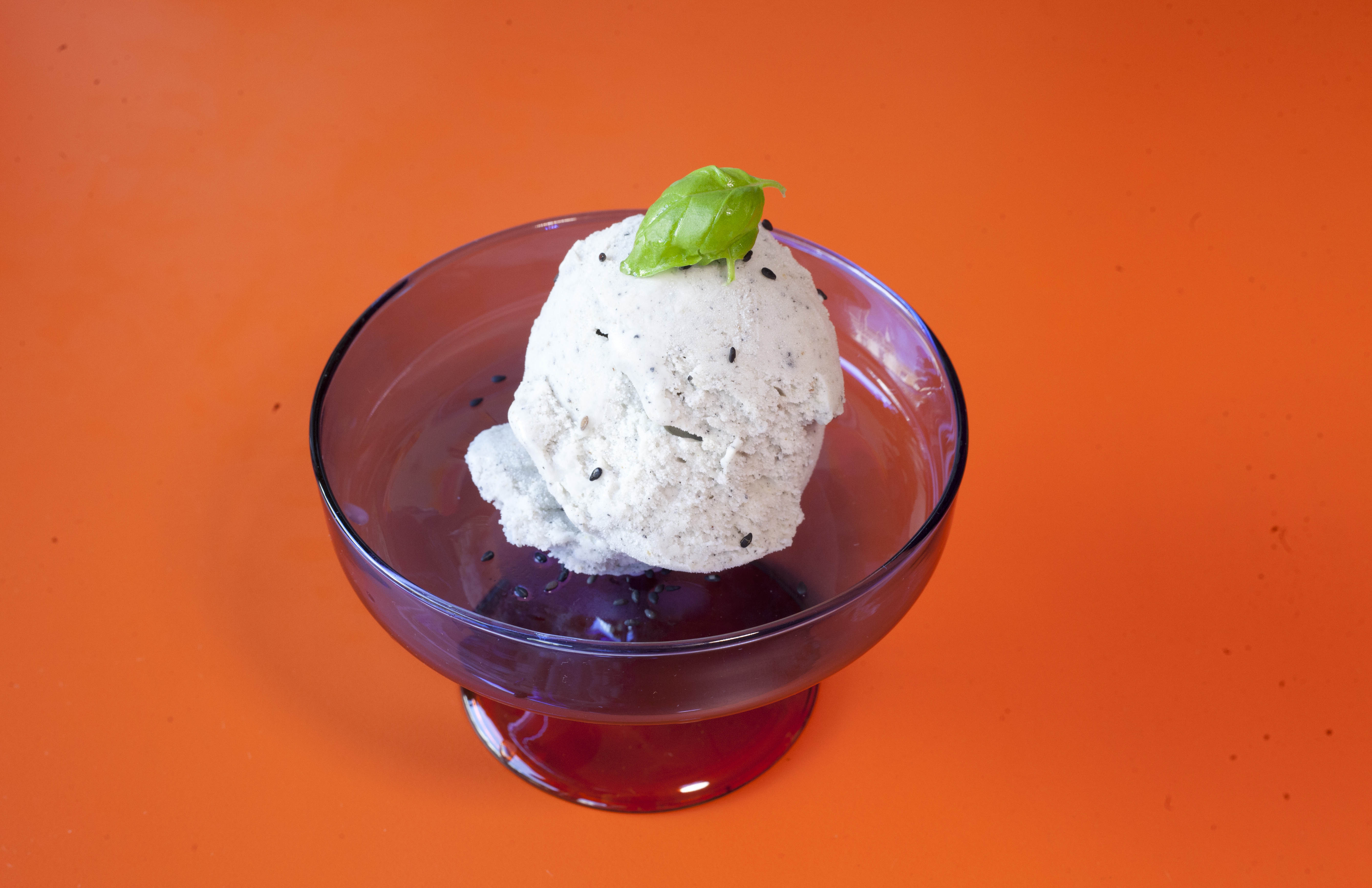
‘Savoury, light and somehow abstemious’:black sesame ice-cream
Dopi doesn’t serve Instagram-ready K-corn dogs, it doesn’t emulate a K-pop video or the exaggerated emotions of a K-drama. It is subtler, presenting clever, moreish food simply, in a venue that’s international, with Korean inflection. It might not be the place to bring a Koreaphilic teen (the K-BBQ across the road, with its steam-punk air induction fans, would be a better choice), but it is a place to touch something close to normality. To experience a culture on its own terms.
Dopi, 142 Bethnal Green Road, London E2 6DG (@dopi.london). Small dishes from £11; larger dishes from £14; hotpots (to share) from £40; desserts from £5
